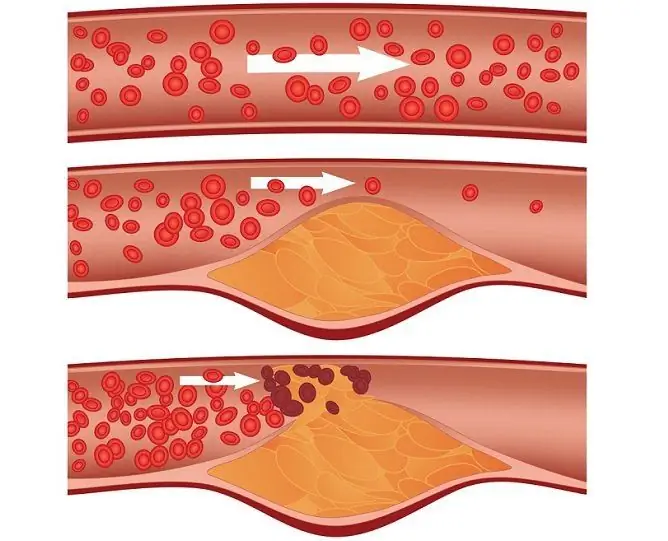- Author Rachel Wainwright [email protected].
- Public 2023-12-15 07:39.
- Last modified 2025-11-02 20:14.
Melasma

Melasma is an acquired, benign skin pigmentation disorder, locally limited, mostly developing in the face and neck. Melasma appears unevenly as light brown to dark, black spots on the skin. Spots with melasma have clear contours, mostly located on open areas of the skin. Melasma does not affect mucous membranes. Pigmented spots with melasma do not peel off, the structure of the affected skin does not change. Melasma tends to lighten in autumn and winter. In the spring-summer period of active sun, melasma takes on a brighter shade. More often women are susceptible to melasma. In men, this type of hyperpigmentation is extremely rare, due to the hormonal etiology of this disease. Melasma can manifest as single lesions of the skin,and many spots all over the exposed surface of the skin (face, neck, décolleté, hands).
Types of melasma
There are three classifications of melasma based on clinical, histological, and course of the disease.
So, according to clinical signs (according to the localization of the manifestations of age spots), melasma is divided into three main types:
- Painting - the main foci of skin lesions are localized in the cheeks and nose;
- Central facial (centrofacial) - age spots are localized in the forehead, nose, upper lip, chin;
- Mandibular - melasma spots affect the arch of the lower jaw.
By the nature of the course of the disease, melasma is divided into:
- Transient - the spots are temporary and disappear completely after the cessation of the influence of the factor that stimulates the production of melanin and the development of age spots (hormones, sun rays);
- Persistent - melasma, which changes from a heavier to a lighter form, but does not completely go away.
By histological signs, they are distinguished:
- Epidermal melasma - an increase in the amount of melanin in the layers of the epidermis. The light brown hue of melasma spots brightens under Wood's lamp;
- Dermal melasma - an increase in the amount of melanin in the superficial and deep layers of the dermis. This pathology is characterized by spots of ashy or bluish-gray hue. Pigmentation does not brighten under Wood's lamp;
- Mixed melasma - this pathology is characterized by damage to both the superficial epidermal layers and the deep layers of the dermis. Melasma spots of this genesis are usually dark brown in color and do not change under a Wood lamp.
Reasons for the development of melasma
The main factors that determine the appearance and development of melasma are:
- Ultraviolet radiation - UV rays stimulate the production of melanin (melanogenesis), as well as the proliferation of melanocytes (skin cells responsible for the production of the pigment melanin);
- Genetic predisposition;
- Gender;
- Hormonal imbalance (taking hormonal contraceptives, pregnancy, ovarian dysfunction);
- Dysfunction of the liver, thyroid gland;
- Diseases of the gastrointestinal tract;
- Therapy with photosensitizing drugs (stimulating the increased sensitivity of the skin to the effects of ultraviolet rays);
- Disruption of the body's metabolic processes, provoked by an excess or lack of minerals and vitamins;
- The use of some cosmetics.
Diagnosis of melasma
Melasma is manifested by only one clinical symptom - a group of clearly defined spots on a certain (more often open) area of the skin. When diagnosing a pathological change in order to choose the correct treatment tactics, melasma must be differentiated from such disorders that have similar symptoms and external manifestations, such as:
- Secondary hyperpigmentation;
- Pigmented xeroderma;
- Poikilodermal skin lymphoma;
- Melanosis Riel;
- Nevi.
The main method for diagnosing melasma is Wood's lamp, which allows the classification of melasma.
Melasma: treatment, basic methods

Melasma is characterized by resistance to various treatments. It should be remembered that melasma is a kind of reaction of the body to an irritating factor (excessive radiation, hormone therapy). With melasma, treatment will be ineffective without eliminating the provoking factor. With the passing form of melasma, symptomatic treatment is prescribed, aimed at reducing the manifestations of age spots.
The main treatments for melasma are:
- Drug therapy is the use of topical drugs, the action of which is aimed at inhibiting and inhibiting tyrosinase (an enzyme that catalyzes the synthesis of melanin from tyrosine). The main side effects of topical melasma medications are secondary hyperpigmentation, dermatitis, erythema, and burning. This technique is most effective for the treatment of epidermal melasma;
- Injection methods - intradermal administration of drugs that inhibit tyrosinase;
- Hardware treatment - the use of light methods (lasers, intense pulsating installations). This technique of melasma treatment allows you to selectively affect the melanin contained in pigmented cells, without affecting the surrounding healthy cells. Laser correction of age spots involves the destruction of micro-areas of the skin, in place of which then healthy cells with normal pigmentation develop. The main disadvantage of the technique is the increased risk of developing post-traumatic pigmentation of the treated skin areas. In epidermal and dermal forms of melasma, treatment with hardware techniques is the most effective;
- Chemical peelings - removal of the upper layer of the epidermis in order to restore the process of skin regeneration and suppression of melanogenesis processes. In order to correct age spots, surface and middle peels are used. The use of deep aggressive peeling techniques for the treatment of melasma is not justified, since the effectiveness of the technique is low in comparison with the risk of developing secondary hyperpigmentation.
Melasma: Skinoren Treatment
In the diagnosis of melasma, Skinoren treatment is one of the most effective methods currently used. Skinoren is a dermatoprotective agent for external use with depigmenting, antibacterial, keratolytic, and anti-inflammatory effects. The main active ingredient in the composition of the drug is azelaic acid, which affects overactive melanocytes by inhibiting tyrosinase. With melasma, Skinoren treatment is most effective in the early stages of the disease. Skinoren is available in cream and gel forms with various concentrations of the active ingredient. With melasma, Skinoren treatment involves a course of 3 months or more. The main side effects of Skinoren are flushing, burning, itching. Skinoren is effective for epidermal melasma. Dermal melasma does not respond to treatment with this drug.
YouTube video related to the article:
The information is generalized and provided for informational purposes only. At the first sign of illness, see your doctor. Self-medication is hazardous to health!






